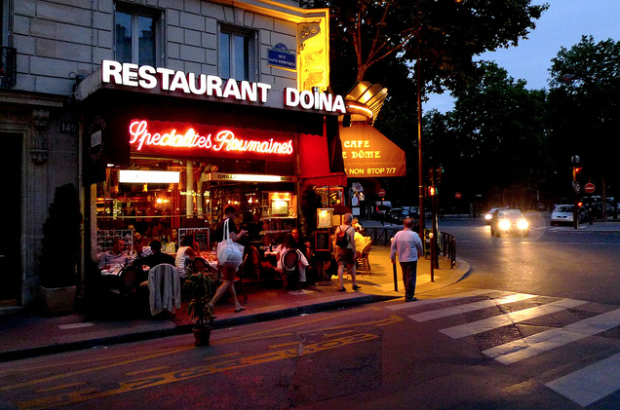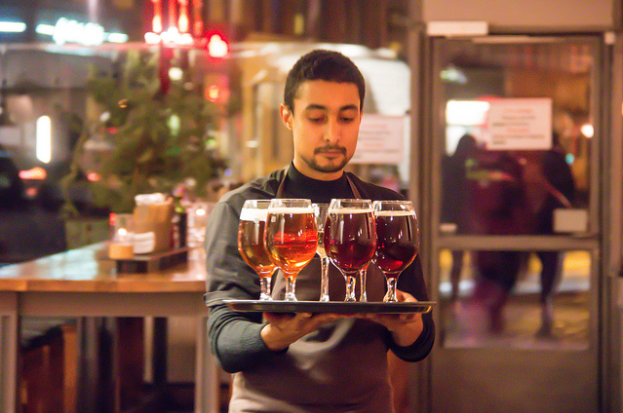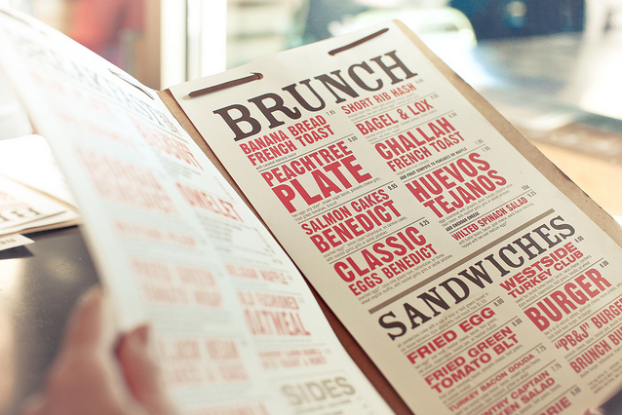 (Source: Flickr)
(Source: Flickr)
Making your restaurant profitable takes a tremendous amount of time and effort. After all, it’s very expensive to fund a new restaurant, and the cost of operations once it’s open remains quite high. However, in spite of these things, it is possible for your restaurant to not only survive but to thrive. To ensure a profitable and successful establishment, you’ve got to be smart about marketing, the location you choose, and of course, you’ll have to have a strong menu and great service.
However, even with all of these things on your side, many restaurants still have trouble turning a profit. Often, this is due to several common issues, which are detailed in this post. Are you shooting yourself in the foot by doing things that keep your restaurant from being profitable? Read this list and see where and how you can improve.
 (Source: Flickr)
(Source: Flickr)
- Lack of funding. This goes way back to the planning phase of your restaurant. When you made a business plan, did you underestimate how much money you’d need? Or were you not able to raise enough?
When you try to make a restaurant happen without proper funding, chances are you’ll be cutting corners on things that will cost you money in the long run, such as buying shoddy kitchen equipment or installing cheaper flooring that won’t last as long. Be sure to do things right the first time, and to invest in quality equipment and work. It might cost more short term, but it pays off in the long run.
- A poor design. Perhaps you were in such a haste to open your restaurant that you didn’t give much thought to how you laid out the tables and chairs. The poor seating layout of your restaurant could be robbing you of profits!
It’s important to maximize how many paying customers can be accommodated in your space, but also to ensure their comfort so that their experience is enjoyable. Making sure that your seating and tables are well-sized, well-placed, not too crowded, and ensuring that you have a bar or waiting area
and that you can accommodate waiting customers and have a bar area, you will be investing in the potential profits of your restaurant.
- Investing too much in the build-out. It’s important to decide on a restaurant concept and create a beautiful look. But how much is too much? According to the Washington Restaurant Association, the “proper ratio, sales to investment, is 3:1 meaning that $3 of sales are generated for every $1 spent on construction, FF&E, and opening costs.” This means that if a restaurant space requires an investment of 100,000 dollars, the sales for the year should total about $300,000. This would allow the owner to reap profits within about three years, then continue to be profitable for the rest of the restaurant’s life. Consider what kind of profits you could reasonably make before investing in a too-expensive space.
 (Source: Flickr)
(Source: Flickr)
- Untrained employees. It takes time and money to train employees. Not training them, or quickly training them, should cut costs, right? Not so fast.
Training your employees is vital for making a profitable restaurant. Yes, it requires some time and potentially money at the get-go, but it is worth it. Trained employees not only have more loyalty to your establishment, but they will be able to more effectively sell to customers. Over time, this drives restaurant sales in a big way. Wouldn’t you be more likely to order more from a server who is knowledgeable about the menu, rather than one who shrugs and say “I don’t know” to customer inquiries?
- Theft. It’s the sad truth: theft is a big problem in restaurants. While it occurs with customers, the far bigger problem is employee theft: stolen bottles of liquor, stolen food, or worse, stolen credit card information from your customers.
While one might be tempted to think that installing cameras in the restaurant to bust employees is the best way to deal with this problem, it’s actually often more beneficial to look at the big picture. Sure, there might be a few bad apples who steal, but if it is constant, it is worth looking at the general morale of your staff. If employees feel that they are not treated well, they are going to be far more likely to steal. Treating employees with respect by investing in the time and energy to train them well, and conveying to them through your conduct and treatment that you respect and appreciate them, will make it far less likely that theft will occur.

(Source: Flickr)
- A menu that is all over the place. How healthy is your restaurant menu? Does it have a cohesive feel, does it focus on proven, successful items? Or is it outdated, weighed down by expensive or hard to obtain ingredients, and overall just not working?
While the people of the restaurant are the first impression, often what keeps people coming back is the food. So be sure to take a long, hard look at your menu every now and again–even seasonally–to make sure that all of the dishes are making the cut. Adjust as needed, and don’t be scared to pare the menu down if items are not working.
- You don’t have a manager. Restaurant managers are expensive, so you’ll just go without. That is the attitude of many a restaurant that isn’t turning a profit.
A restaurant manager may require an investment, but ultimately, it is their job to keep the establishment running smoothly so that it can be lined up in the best way to make profits. By not having a restaurant manager, you’ll create more headaches for yourself as the owner, and might actually rob your restaurant of profits.
- You don’t have systems in place. A smoothly running machine is all about having systems and policies in place. Do you have a policy for employee uniforms? For asking for time off? For receiving and billing?
By taking the time to set up strong systems and policies in your restaurant, you will free yourself and your staff to deal with the more important business at hand: feeding your customers, keeping them happy, and keeping them coming back.
Conclusion: A profitable restaurant is difficult even in the best of conditions, so why make things more difficult? By evaluating what you are doing (or not doing!) that is keeping your restaurant from being profitable, you can make positive changes so that your restaurant can become a streamlined business and attain success.
Are any of these things keeping your restaurant from making a profit?


